
In this comprehensive guide, we’ll explore the best camper tire pressure monitoring systems available today. We’ll dive into top-rated models, essential features to look for, and even walk you through the installation process. Whether you’re a seasoned camper or new to the RV lifestyle, this article will help you make an informed decision to keep your travels safe and worry-free. Let’s roll into the world of camper TPMSs and find your ideal road trip companion! 🛣️🔧
GUTA tire pressure monitor with 10 Sensors
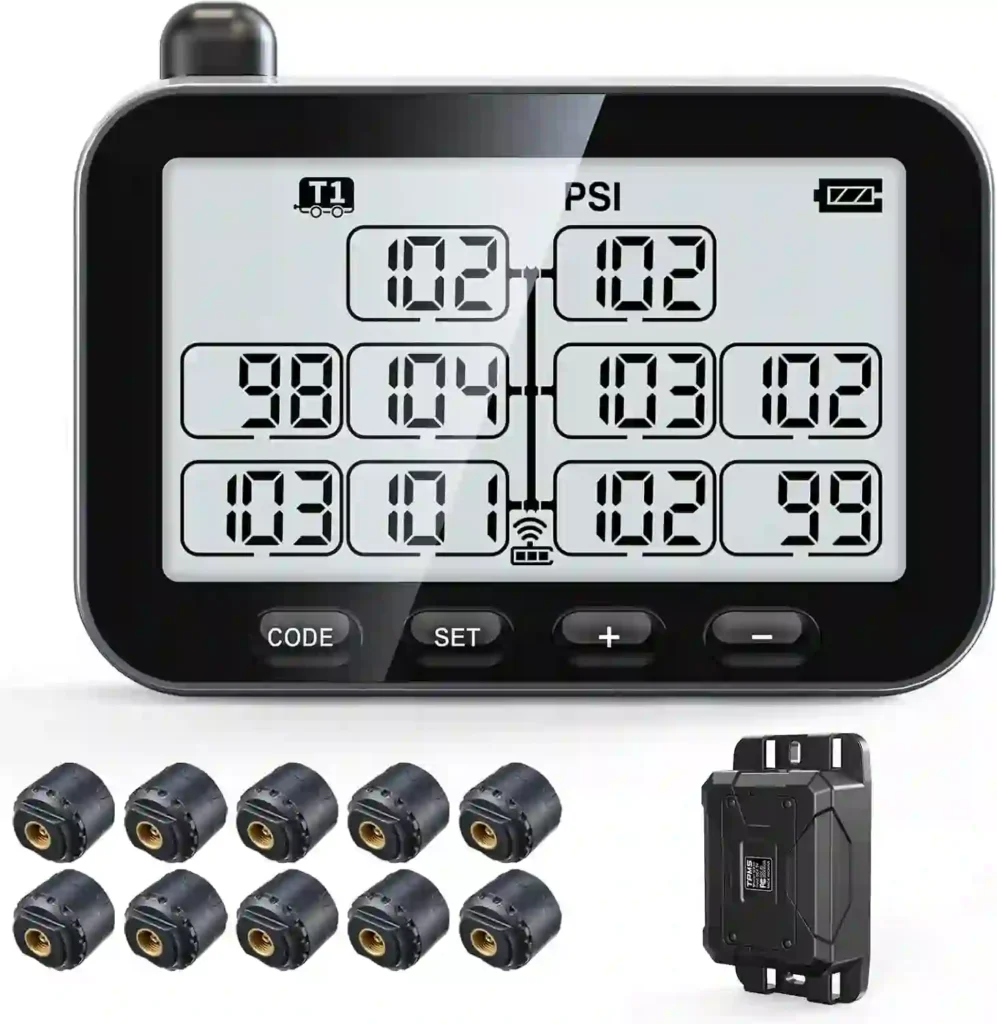
| Feature | Specification |
|---|---|
| Product Name | Guta tire pressure monitor with |
| Sensors | 10 Sensors |
| Alert Modes | 6 Alert Modes |
| Signal Booster | Ensures reliable communication between sensors and display |
| Power Saving | yes Extends battery life |
| Long Sensing Distance | Suitable for larger vehicles and trailers |
| Multi-Trailer Support | Capable of monitoring up to 3 trailers |
camper tire pressure monitoring system
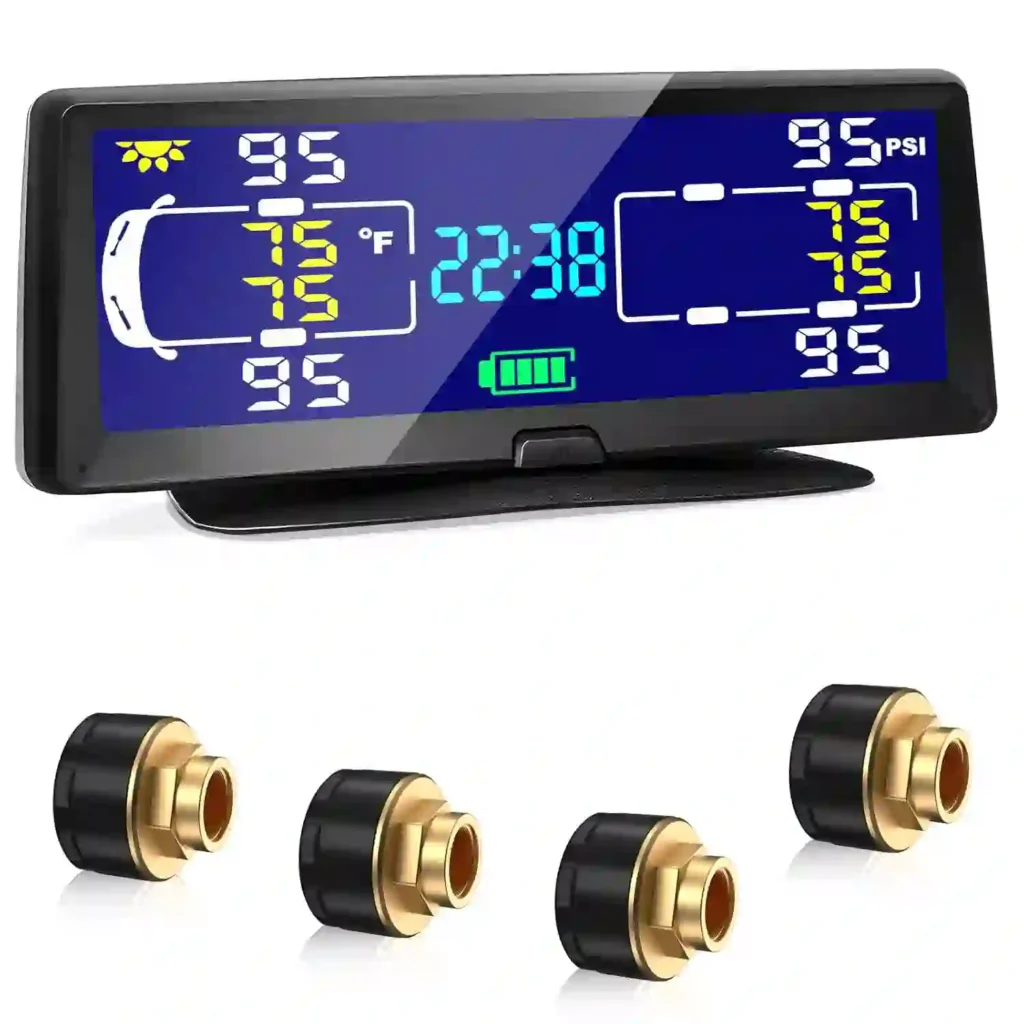
| Feature | Specification |
|---|---|
| Product Name | camper tire pressure monitoring system |
| Pressure Range | 198 PSI |
| Power Source | Solar-Powered |
| Long Sensing Distance | Covers up to 130 feet |
| Sensors | Includes 4 sensors |
| Dimensions | 8.8 x 3.9 x 3.2 inches |
| Weight | 1.76 Pounds |
| Model Number | CZ-TYJC-4Tires |
| Battery | Lithium Ion battery |
| Origin | China |
Best rv tire pressure monitoring system
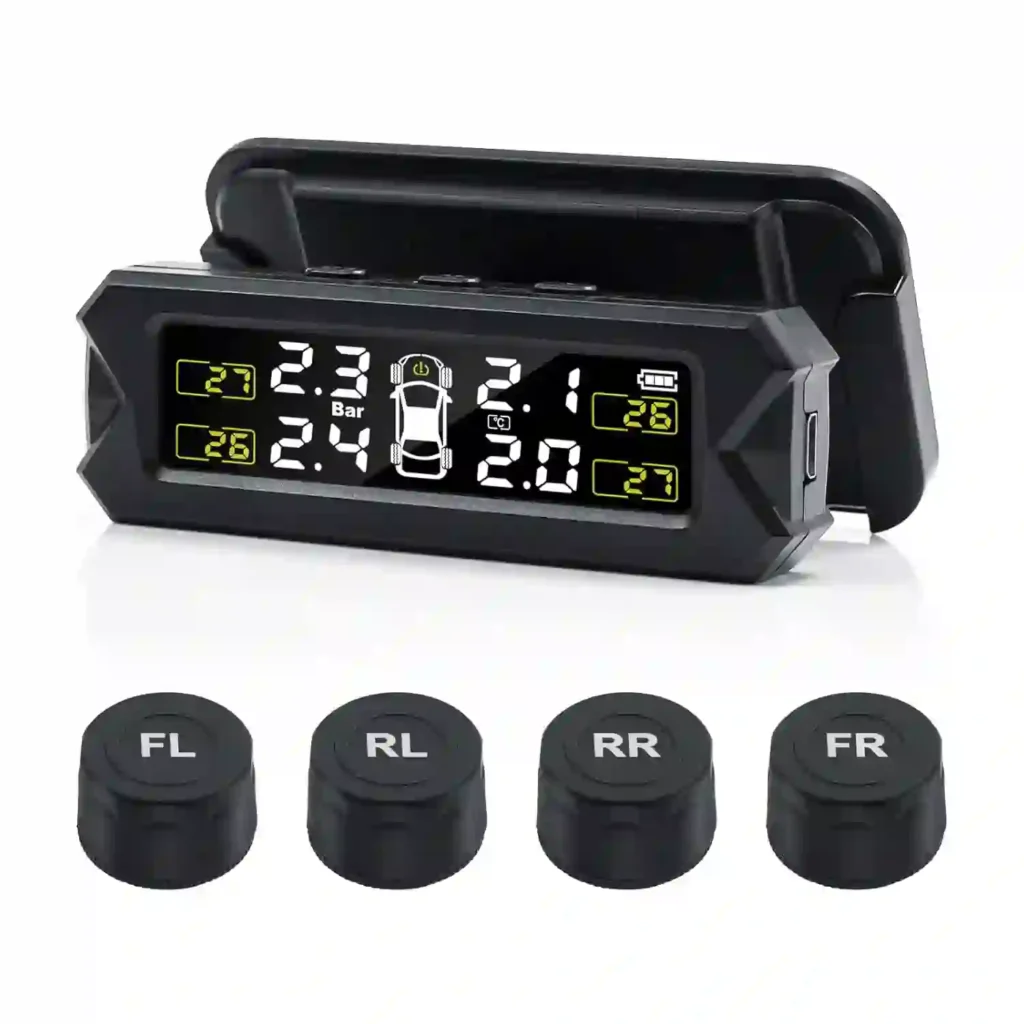
| Feature | Specification |
|---|---|
| Product Name | Waterproof camper tire pressure monitor |
| Waterproof Rating | IP68 |
| Power Source | Solar + Battery |
| Connectivity | Wireless |
| Real-Time Detection | monitoring continuously |
| Pressure Range | 14 to 87 PSI |
| Dimensions | 6.3 x 5.24 x 1.93 inches |
| Weight | 0.08 ounces |
| Origin | Made in China |
Tire Pressure Monitor for camper
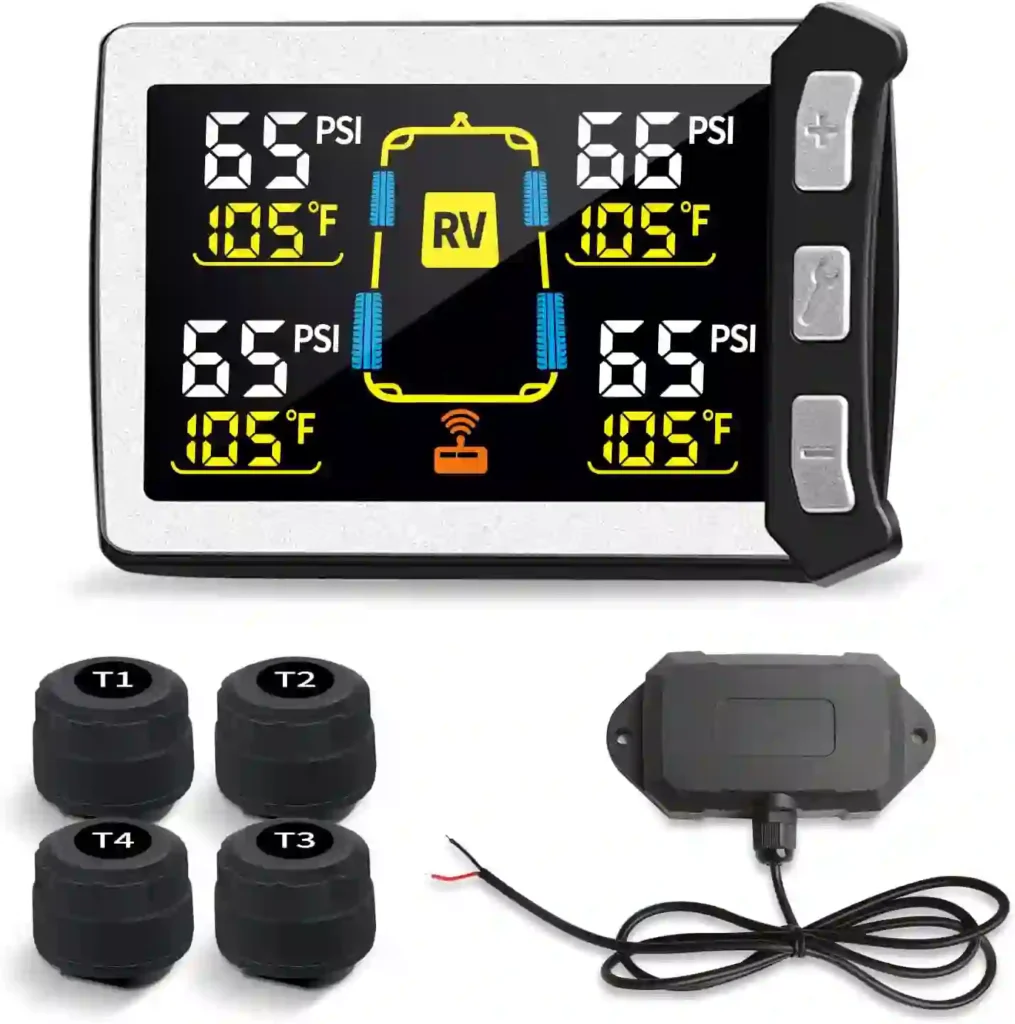
| Feature | Specification |
|---|---|
| Product Name | Tire Pressure Monitor for camper |
| Display | Color LCD screen |
| Sensors | 4 sensors |
| Pressure Range | 0 to 87 PSI |
| Transmission Distance | Covers up to 120 feet |
camper tire pressure monitoring system

| Feature | Specification |
|---|---|
| Product Name | camper tire pressure monitoring system |
| Display | Color Display |
| Sensors | 4 Sensors |
| Compatibility | Metal and Rubber Valve Stems |
| Dimensions | 8.46 x 8.27 x 3.23 inches |
| Weight | 1.68 pounds |
Campers and Trailers Monitor
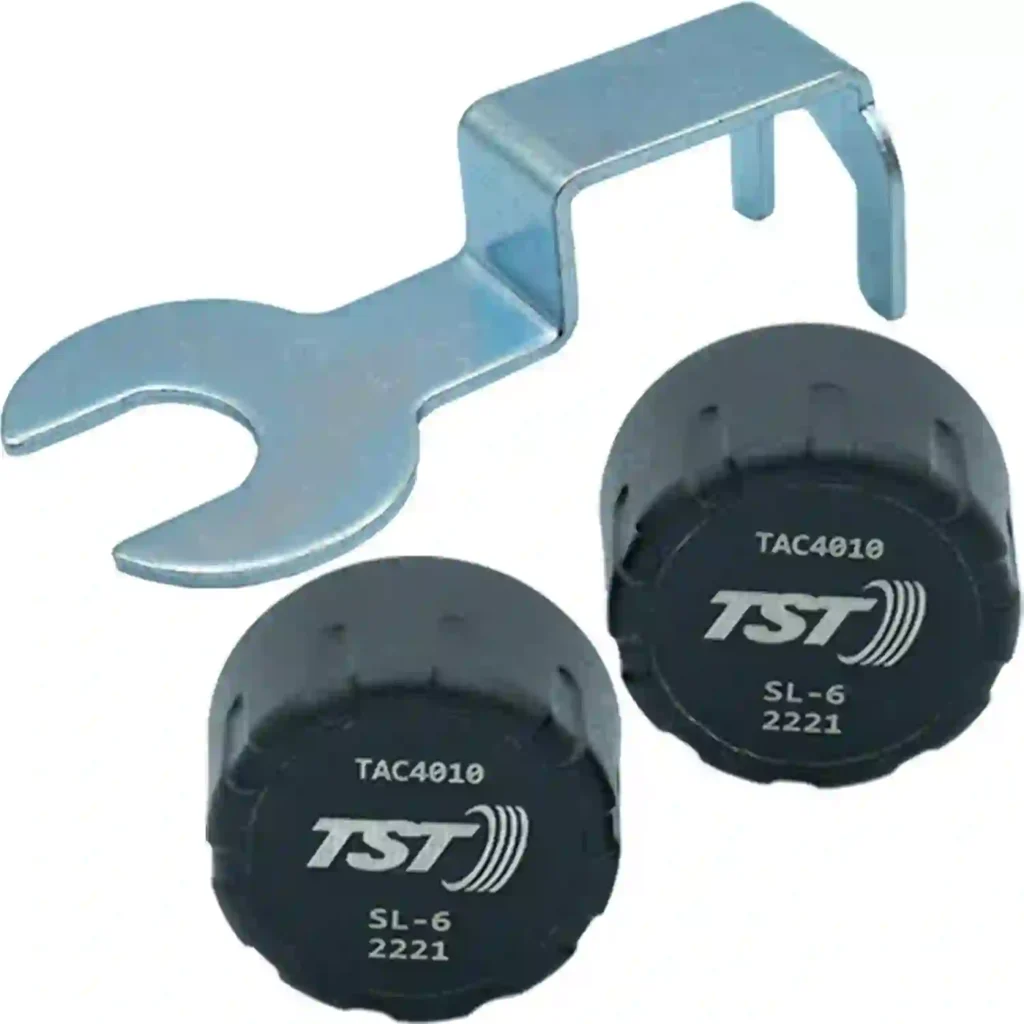
| Feature | Specification |
|---|---|
| Product Name | Campers and Trailers Monitor |
| Monitoring | Real-time monitoring |
| Alerts | Timely notifications |
| Installation | Easy installation |
| Connectivity | Wireless |
| Dimensions | 4 x 3 x 0.1 inches |
| Weight | 2.08 ounces |
| Compatibility | Metal and Rubber Valve Stems |
